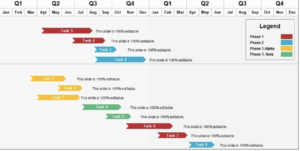Why PIM Integration with Marketplaces Like Amazon, Flipkart, and Snapdeal Is a Game-Changer for Your Business
In today’s e-commerce world, speed, accuracy, and efficiency determine how fast your brand grows. If you’re selling across multiple marketplaces — like Amazon, Flipkart, Snapdeal, Meesho, or JioMart — you already know the struggle: managing product data, images, prices, and stock for each platform is exhausting and error-prone.
That’s where a Product Information Management (PIM) system integrated with marketplaces becomes your biggest competitive advantage.
🧭 What Is a PIM System?
A Product Information Management (PIM) system is a centralized platform where all your product data — including titles, descriptions, specifications, images, pricing, and stock — is stored, updated, and managed.
Instead of editing product details in multiple places (Amazon Seller Central, Flipkart Dashboard, Snapdeal Panel, etc.), you do it once in your PIM, and the system automatically syncs your updates to all connected marketplaces.
⚙️ Marketplace Integration — How It Works
When your PIM integrates directly with marketplaces through APIs or exports:
- You add or update products in one place.
- The PIM automatically syncs data with each connected marketplace (Amazon, Flipkart, Snapdeal, etc.).
- It ensures consistent listings, updates prices, and even syncs stock availability in real-time.
No manual uploads. No CSV re-exports. No wasted hours.
⏳ Save Time and Eliminate Manual Work
Without a PIM, your team might:
- Upload the same product data separately to 3–5 marketplaces
- Resize and rename the same images multiple times
- Manually update prices during sales or discounts
- Re-upload products whenever something changes
With PIM:
- Update once → reflected everywhere automatically.
- Upload images once → optimized for all platforms.
- Manage hundreds or thousands of SKUs in minutes, not days.
💡 Example: A seller managing 1000 SKUs across 3 platforms spends ~40 hours a week updating listings.
With a PIM, that drops to just 3–4 hours.
That’s nearly 90% time saved — time you can use for marketing, inventory planning, and customer service.
💰 Save Money with Automation
Manual catalog updates often mean:
- Hiring multiple listing operators
- Paying for data entry errors (wrong prices, duplicate SKUs)
- Wasting money on delays and inaccurate listings
A PIM reduces your operational costs by:
- Automating repetitive tasks
- Eliminating duplicate data entry
- Preventing listing errors that can lead to returns or seller penalties
🧮 For many small-to-mid e-commerce businesses, that’s a cost saving of ₹20,000–₹50,000 per month.
🧩 Improve Accuracy and Brand Consistency
Each marketplace has unique product attribute requirements — image sizes, title formats, mandatory fields, etc. Managing these manually is a nightmare.
With an integrated PIM:
- Your listings are always compliant with marketplace rules
- Attributes, titles, and descriptions remain consistent across all platforms
- You maintain a unified brand identity wherever you sell
That means fewer listing rejections and a stronger brand presence.
📦 Centralized Control of Stock and Pricing
Marketplace integration allows your PIM to:
- Sync stock levels in real-time
- Adjust pricing dynamically across marketplaces
- Prevent overselling and stockouts
So if one unit sells on Amazon, your Flipkart and Snapdeal stock automatically update — saving you from cancellations and penalties.
🚀 Faster Time-to-Market
With a connected PIM, new product launches become effortless:
- Create product once
- Publish to all marketplaces with a click
- Reach millions of customers instantly
You go live in minutes, not days — which means you can capitalize on trends faster and sell before competitors even list.
📊 Better Insights and Reporting
When all product data and marketplace updates flow through one system, you get valuable insights:
- Which SKUs perform best on which marketplaces
- Which listings need optimization
- Pricing effectiveness per platform
Your decision-making becomes data-driven, not guesswork.


